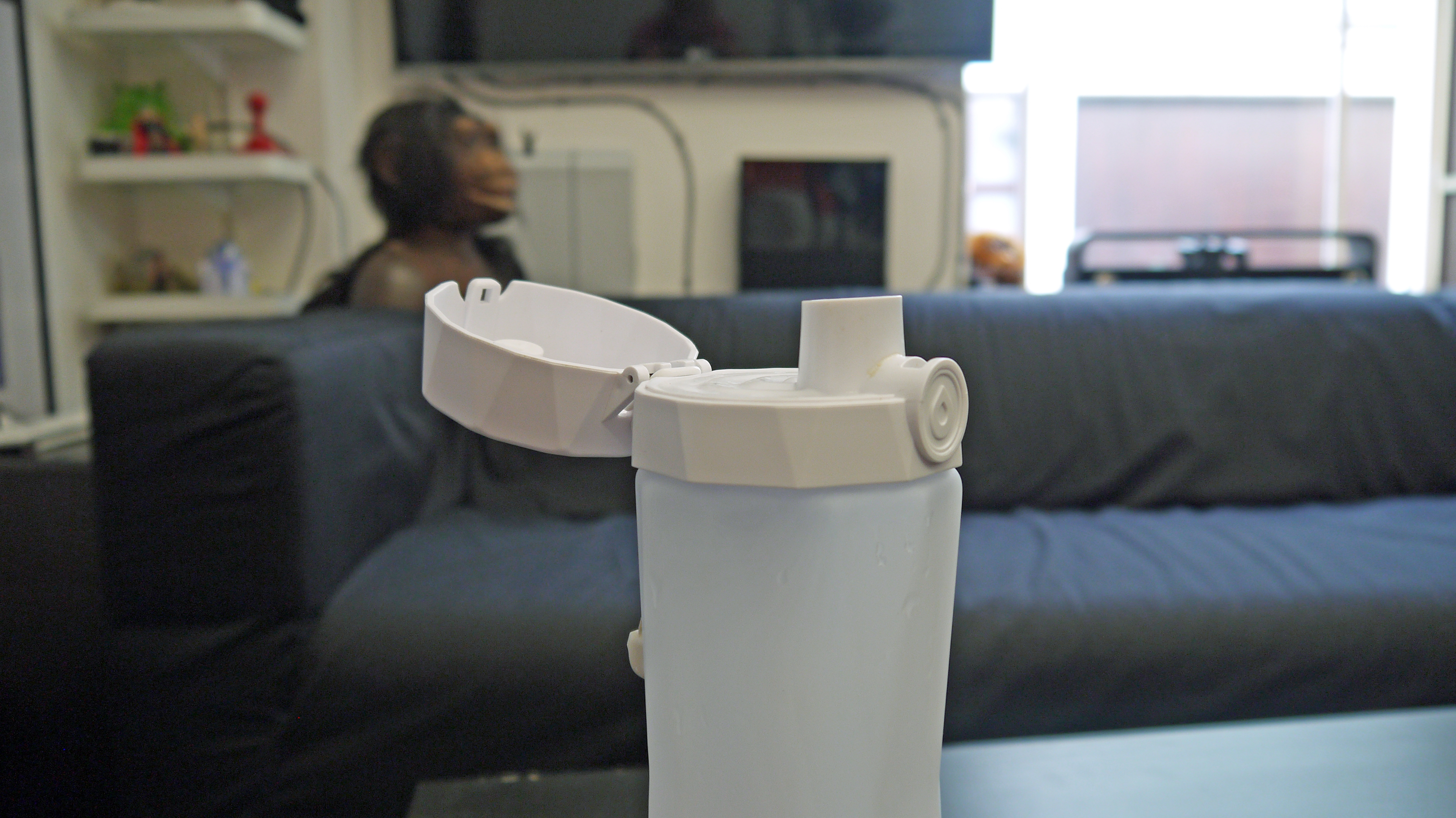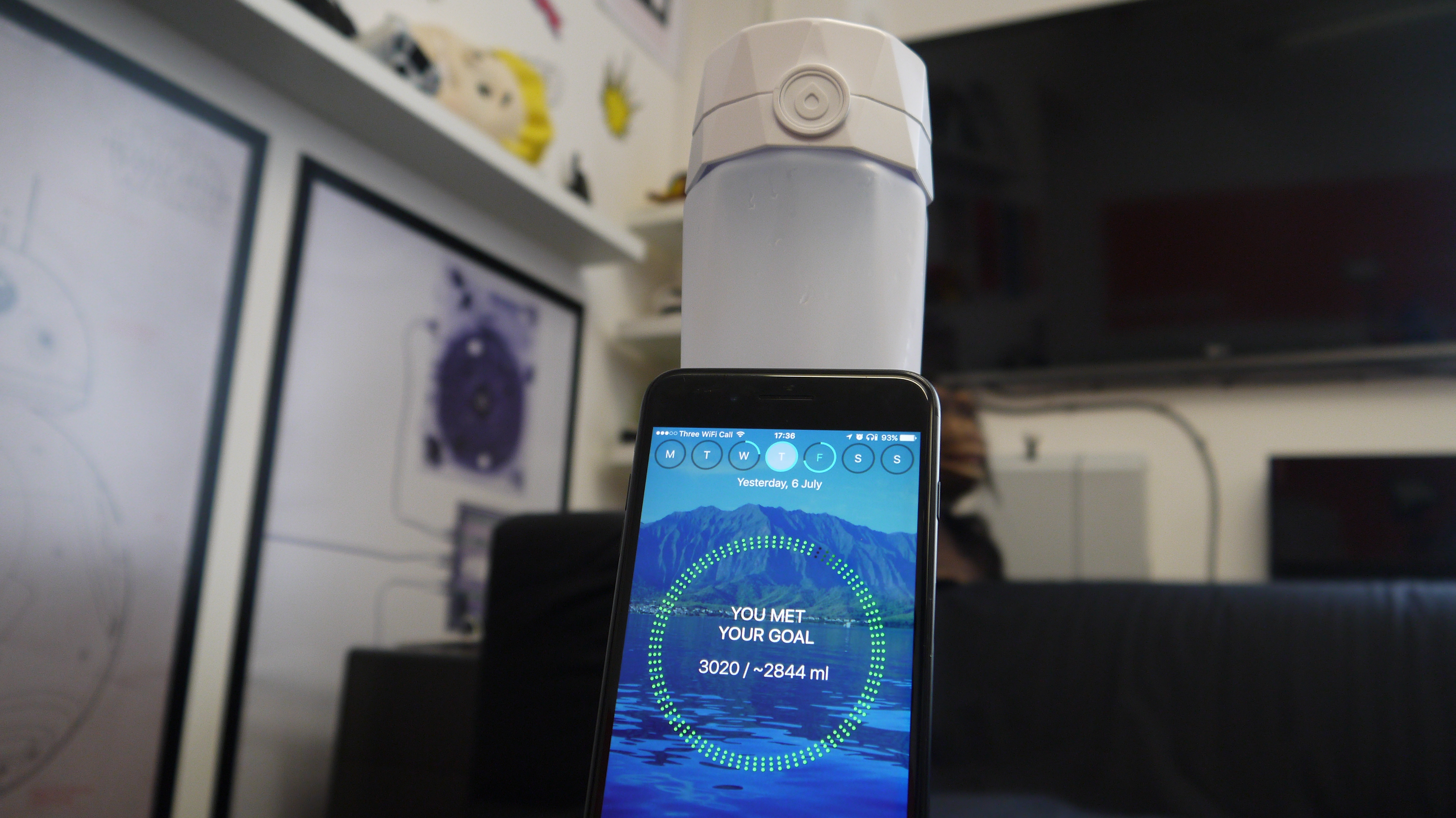Unfortunately, I do need a smart water bottle to make me drink
But will I know when to stop?

There are some things in life that I consider myself accomplished at. That I really have a handle on - things that I’ve been pretty good at ever since I stopped being a baby.
Breathing. Walking. Sleeping. Holding my head up unaided using the muscles in my neck. If I needed a really in-depth CV I’d probably chuck these on there.
Until recently, I’d have also put ‘drinking water’ on that list, such was my belief that I knew how to use taps to put sweet H2O into my body. Then I was sent the Hidrate Spark smart drinking bottle and, apparently, I was wrong.
This bottle is designed to track your water consumption daily and let you know if you’ve drunk enough, or if you need to open your throat and chuck more droplets down there.
The bottle itself features a long stem that measures how much water is left, and a sensor in the opening at the top to measure the flow through, accurately working out how many milliliters you’ve imbibed each day.

But the Hidrate Spark is smarter than that: it’ll work out dynamic goals for how much water you drink each day. It creates these targets based on your daily activity, body composition, the weather in your area and your elevation.
Sign up for breaking news, reviews, opinion, top tech deals, and more.
To me, this was heaven. As a runner I never feel like I take on enough water, so to have something not only tell me how much I should be drinking but to be intelligent enough to modify the amount… well, that was the role I’ve been asking my Mum to play for years and yet she still tells me that I’m over 30 years old now and I need to stop asking such things.
While the Spark itself records the data, the app is where the intelligence really lies. It’s simple to use, with a large ring showing you how much water you need to drink, and a little marker showing you how much you should have drunk by that point in the day.
There’s not a lot else to the app really - a section where you can compete with chums would be interesting if anyone actually had this bottle, but even then I’d be worried about competitively drinking water in case I accidentally drowned.
Taking the plunge
So - the premise was strong. I was finally going to be hydrated adequately, my moods would improve, I would have better skin and, well, I’d be less thirsty. What a time to be alive.
I entered my vital stats, connected Facebook and MyFitnessPal to give the app all the info it needed to keep an eye on what I was doing (and to connect me to friends also using Hidrate which was, unsurprisingly, none) and I was ready.
I was instructed to fill the bottle up and let it sit for a few seconds to register how much water was in it, and then it was into a heady world of artificial intelligence taking over my liquid consumption.
It was brilliant. The design of the bottle was sturdy yet lightweight, the bottle top opening and closing with a strong click and the spout made a pleasant gurgling sound when I drank.

The little hook on the side made the Hidrate bottle easy to carry and I liked the idea of constantly looking at how I was doing, making sure I was drinking enough to keep up with the flashing bar on my ring. If you’re competitive, anything you can win at is brilliant.
And the best bit - the bottle will flash whenever you’re falling behind your ‘hydration goal’, alerting you it’s time to get a-drinking. You can choose the colors and kind of pulse you want, from a gentle glow to an insane red and white flash.
I went for the latter - something that would garner a lot of questions of: ‘WHY IS THAT BOTTLE FLASHING?’
And I was drinking water. So much. So much water. All the time. Why did I need to drink so much water? Why were my rings not filling up?
It took me three days to fill up the first time - partly because apparently I’m really dehydrated, and partly because I wasn’t sure if tea counted as water. Or Coke. Or orange juice. You could manually add water into the app, but I didn’t want to put anything in that wasn’t actually straight up clear. (Making vodka a conundrum).
I eventually filled up my first ring after a few days, but I felt like I was drinking almost too much, feeling a little bloated and wondering if even a fish would manage to fill its ring regularly.

Then came another problem - forgetting the bottle. I went to work without it, and I tried to enter everything manually, but it was too much of a hassle. In fact, I got so annoyed at having to do this I was surprised I didn’t desiccate.
This happened a few times in the following weeks, and I started to get irritated (possibly through my refound dehydration) and stopped caring about carrying the Spark around.
(It also brought a fun moment where I left the bottle in the kitchen at work and someone told me there was a panic that there was a white cylinder flashing away… and that it might have been a bomb. Because that’s clearly a logical conclusion).
The other thing is, as a daily runner, the Hidrate app wasn’t able to learn when I’d done anything, even though I’d linked up MyFitnessPal, which was munching all my steps and running data from Garmin.
There’s not even a way to enter this manually, so short of scraping every drop of sweat off my brow and measuring it in a bowl, I wasn’t able to work out if I needed to drink more or if the app was somehow working this out from how active I’d said I was.
It was also incredibly difficult to clean the bottle, given the long and narrow shape. I could scrub up around the top, but getting deep into the body of the Spark was impossible… and given I’m essentially a child with a man’s face, making that much effort to clean something wasn’t going to happen.
But there were still the good days though, the halcyon ones I’ll remember when I’m grey and old and still cradling my decrepit Spark bottle lovingly.
Those when I’d remember the bottle and I’d really enjoy the idea of being told by the app I had enough liquid in me. Gamifying my water intake was really fun and definitely saw me getting more water inside my body.

If I’d had three or four of these bottles, it would have been a lot easier to make sure I regularly tracked my water intake. But while they’re not hugely expensive at $46 (around £35 / AU$60) it’s not something that’s cost-effective compared to a normal bottle or - #lifehack coming up - just lying on the counter and putting my head under a tap to save both cost and washing up.
Also, not being able to track my exercise effectively meant I stopped trusting the daily goals - this either needs to be able to pick up everything or just tell me how much I’m drinking with some vague advice… this halfway house wasn’t right for me.
But the only question that matters: did I drink more water than before? Absolutely, and the novelty didn’t really wear off thanks to the bottle being so well-made and pleasant to drink from.
It’s good value at $46 too - a lot of people were interested when I explained what it could do, and if there was a bundle of four bottles for $100 / £70 / AU$120 I’d probably be interested, as it does make me drink more water… and it feels like it’s worth investing in improving my ability to achieve a basic human function.
However, I can’t say it revolutionized my life, partly because I never got into a rhythm of filling the water intake ring every day. This thing was super smart, but I never managed a full week of drinking as much as I ‘should’ due to various issues.
I don’t feel like I’m turning into a sand-filled monster, and I don’t feel that dehydrated… but then again, perhaps there’s a version of me waiting that can do something amazing - like fly or turn invisible - if only I drank enough each day.
Maybe I’ll find out. Or maybe I just need to remember to drink more water… with a few more tweaks the Hidrate Spark could become that indispensable thing to have in my bag.
- Gareth Beavis is TechRadar's Running Man of Tech, testing the latest in fitness technology in a never-ending quest to run further and faster and bringing you the results in this column.
- If you want to say hi, he's @superbeav on Twitter
- You can see his stumblings on Strava
- And for more data, follow him on Smashrun
- And if you want to get the full lowdown on the latest and greatest running tech, read the rest of the Running Man of Tech story here

Gareth has been part of the consumer technology world in a career spanning three decades. He started life as a staff writer on the fledgling TechRadar, and has grew with the site (primarily as phones, tablets and wearables editor) until becoming Global Editor in Chief in 2018. Gareth has written over 4,000 articles for TechRadar, has contributed expert insight to a number of other publications, chaired panels on zeitgeist technologies, presented at the Gadget Show Live as well as representing the brand on TV and radio for multiple channels including Sky, BBC, ITV and Al-Jazeera. Passionate about fitness, he can bore anyone rigid about stress management, sleep tracking, heart rate variance as well as bemoaning something about the latest iPhone, Galaxy or OLED TV.